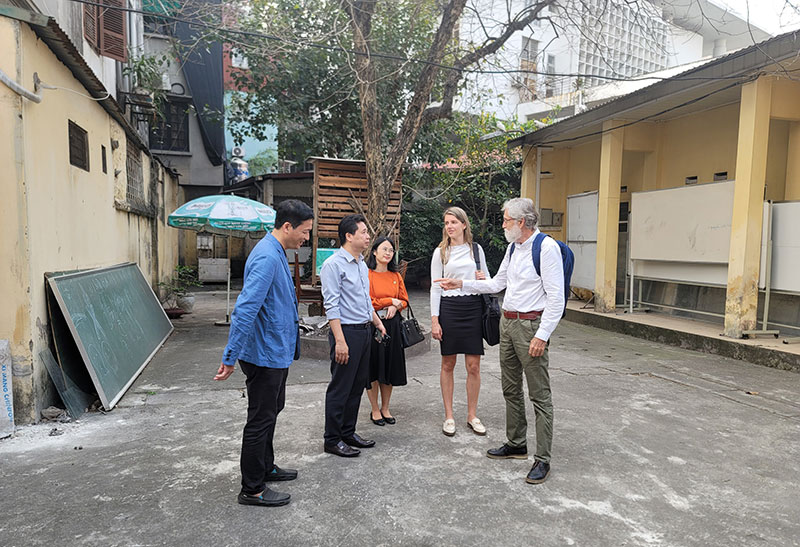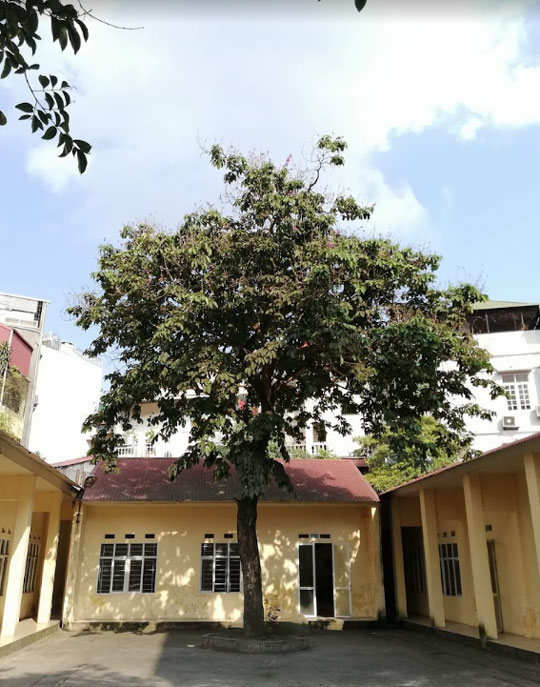Resilient Urban Centres and Surrounds (RUCaS)
Hanoi University of Civil Engineering
Hanoi, Viet Nam
ICEM team meeting with HUCE academic team
HUCE disused building - site for NbS development
The vision for the Hanoi University of Civil Engineering (HUCE) is to model how nature-based solutions can improve functioning of existing infrastructure, and deliver improved outcomes responding to heat, water management and accessibility to a heavily built up area on campus.
The HUCE campus largely comprises 5–6 storey medium height buildings, similar to other buildings and houses in the compact inner areas of large Vietnamese cities. Buildings such as these can create problems:
- They contribute to urban heat because:
- being surrounded by other high-rise buildings reduces ventilation
- building materials trap heat
- heat reflects off concrete yards and car parks, and there is limited shade trees or green space.
- Poor drainage and non-functioning (or non-existent) rainwater systems lead to ponding during heavy precipitation events.
- Buildings do not comply with current accessibility codes.
Generally, classrooms hold 50–150 students, yet are only ventilated by fans during extremely hot weather (with temperatures of up to 40oC).
RUCaS is working with HUCE to incorporate nature-based solutions at a building scale that respond to urban heat, poor water management and amenity.
The case study explores options to extend use of nature-based solutions being developed at a smaller scale elsewhere on the campus – green walls, planting boxes, rainwater harvesting, green energy and accessible design – into a more common context of multi-storied high-rise teaching buildings. These interventions aim to reduce heat, generate fit-for-purpose water supplies, provide shade and cooling, and improve accessibility. Sensors can also be used to monitor and evaluate the performance of the interventions across the campus, supporting teaching modules to incorporate nature-based and accessible design solutions.
Embedding nature-based solutions in the campus of a design, engineering and architecture school also aims to help nurture future champions.
What does a Water Sensitive City look like?
The CRCWSC has produced research, guidelines and
tools related to the following topics:
Integrated Urban Flood
Management
Climate change
mitigation
Community
engagement
Economics and
business case


